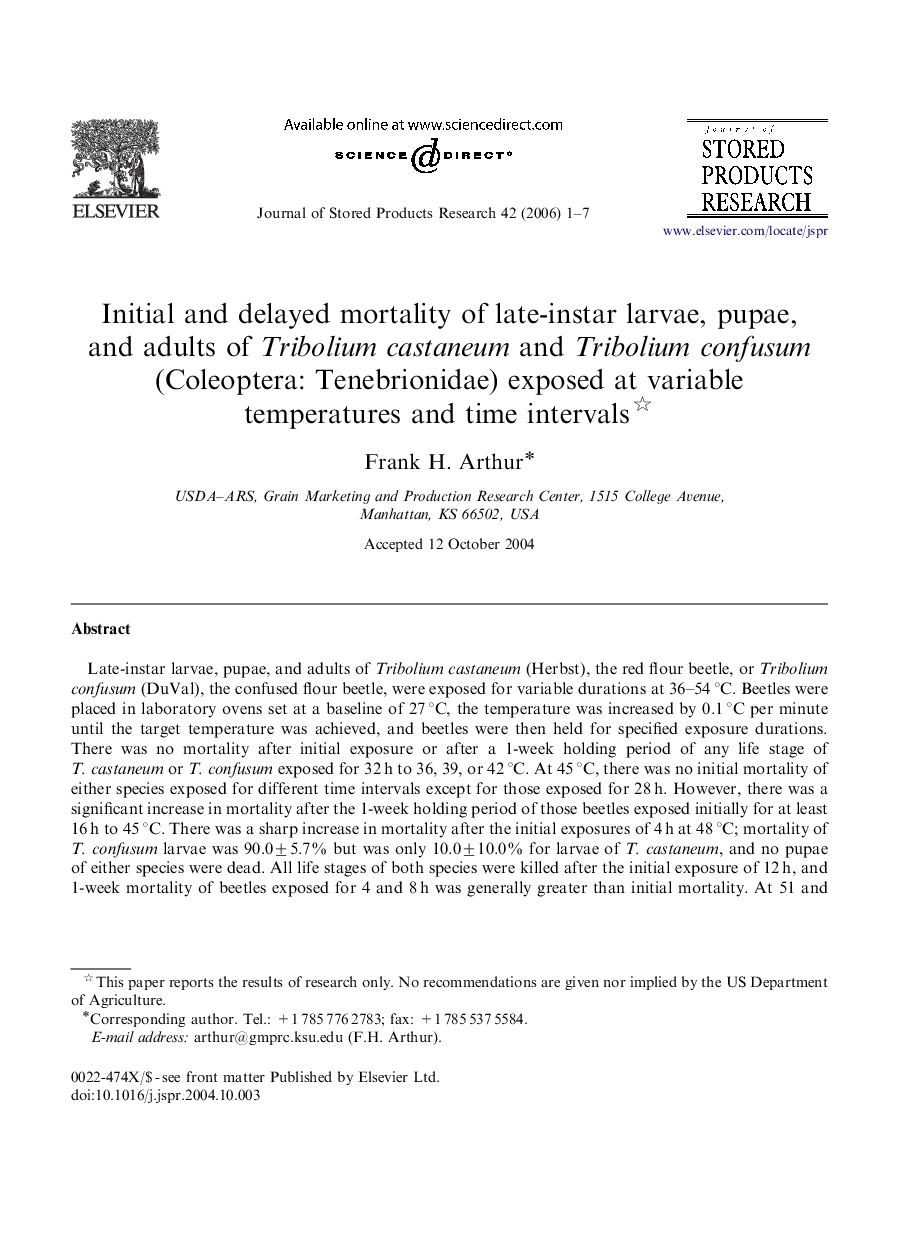| Article ID | Journal | Published Year | Pages | File Type |
|---|---|---|---|---|
| 4517631 | Journal of Stored Products Research | 2006 | 7 Pages |
Late-instar larvae, pupae, and adults of Tribolium castaneum (Herbst), the red flour beetle, or Tribolium confusum (DuVal), the confused flour beetle, were exposed for variable durations at 36–54 °C. Beetles were placed in laboratory ovens set at a baseline of 27 °C, the temperature was increased by 0.1 °C per minute until the target temperature was achieved, and beetles were then held for specified exposure durations. There was no mortality after initial exposure or after a 1-week holding period of any life stage of T. castaneum or T. confusum exposed for 32 h to 36, 39, or 42 °C. At 45 °C, there was no initial mortality of either species exposed for different time intervals except for those exposed for 28 h. However, there was a significant increase in mortality after the 1-week holding period of those beetles exposed initially for at least 16 h to 45 °C. There was a sharp increase in mortality after the initial exposures of 4 h at 48 °C; mortality of T. confusum larvae was 90.0±5.7% but was only 10.0±10.0% for larvae of T. castaneum, and no pupae of either species were dead. All life stages of both species were killed after the initial exposure of 12 h, and 1-week mortality of beetles exposed for 4 and 8 h was generally greater than initial mortality. At 51 and 54 °C, 2- and 1-h exposures, respectively, killed all life stages of each species. Mortality in conditions of gradual temperature increase was less than previous studies with sudden temperature increases.
